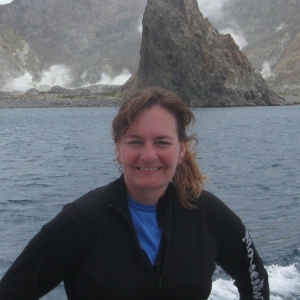The Volcanic History and Magmatic Degassing of Dominica: Implications for Future Eruptions
The National Geographic Society
Award Amount: $20,000
Holli Frey, associate professor of geology, is the recipient of a National Geographic Society Committee on Research and Exploration Grant. These awards support scientific field work, with an emphasis on multidisciplinary projects that address environmental issues.
Project Abstract:
Dominica in the Lesser Antilles has the most volcanic hazard potential of any island in the Caribbean, with nine potentially active volcanic centers that are Pleistocene or younger in age (Lindsay et al., 2005) and voluminous explosive deposits. The young volcanism, shallow seismicity, and fumerolic activity in Dominica suggest an active magma reservoir and potential for future eruptions. In order to better understand the magma plumbing system beneath Dominica and where magma is more prone to erupt, we propose to examine the volcanic history of Dominica in two different ways on two different time scales: 1) dating zircons from ignimbrites and lava domes and 2) characterizing stream chemistry and stable isotopes from streams and hydrothermal areas.
By combining the history of the explosive eruptions with present-day levels of degassing, we will test the hypothesis that 1) all of the ignimbrites are young (<50 ka) and emanate from a single magma chamber. If the ignimbrites derive from a single large magma chamber, there is an increased likelihood of a more catastrophic eruption that poses an island wide threat. If the zircons in the ignimbrites display disparate histories and/or a systematic age progression, there may be multiple or smaller ephemeral magma chambers feeding the explosive eruptions. We will also test whether 2) stream chemistry, particularly carbon isotopes, can be used to infer shallow magma degassing and potentially used for volcano monitoring. We will compare our data to data collected from 2000-2006, during which time volcano seismicity increased in northern Dominica.
